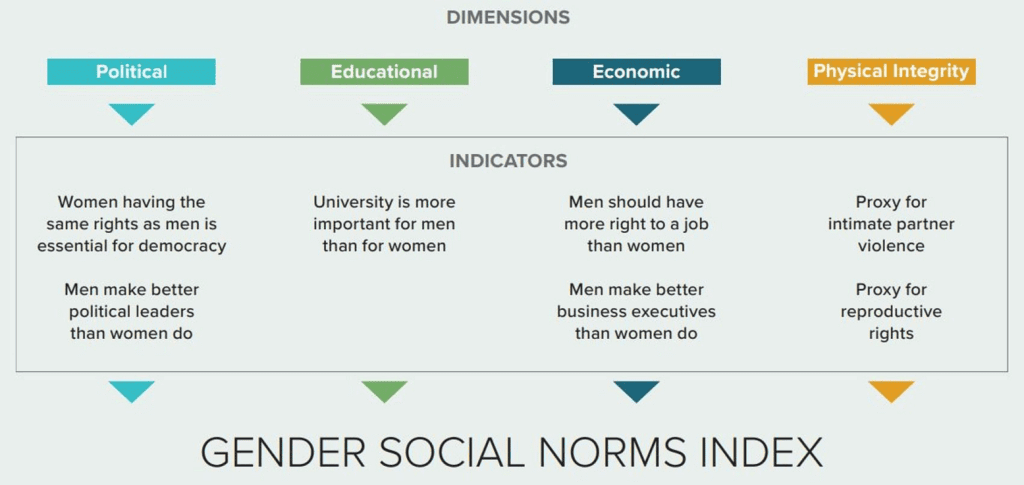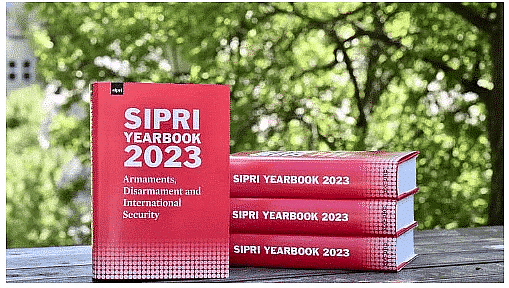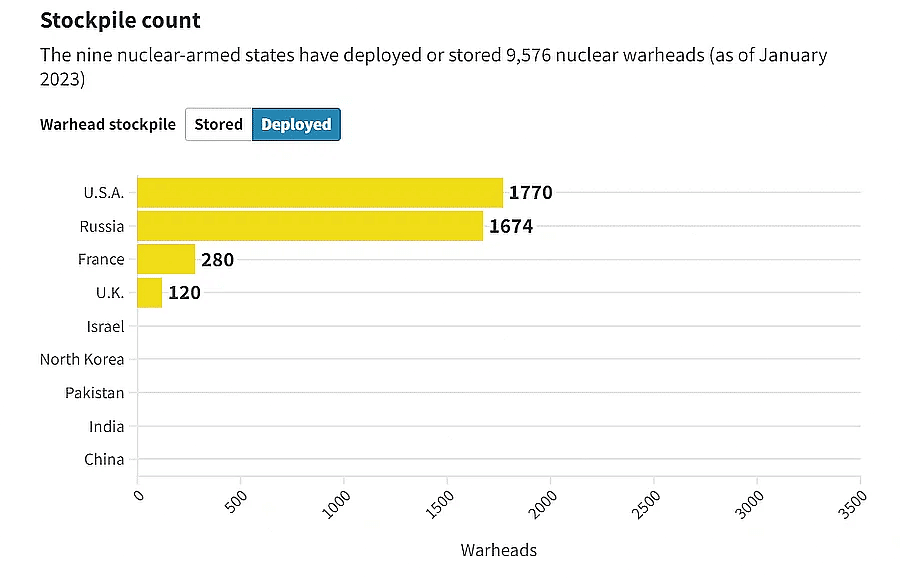UPSC Daily Current Affairs - 15th June 2023 | Current Affairs & Hindu Analysis: Daily, Weekly & Monthly PDF Download
GS-II
Suggestions invited on Uniform Civil Code
 Why in News?
Why in News?
The 22nd Law Commission of India has sought fresh suggestions from various stakeholders, including public and religious organisations, on the Uniform Civil Code (UCC).
What is Uniform Civil Code (UCC)?
- The UCC aims to establish a single personal civil law for the entire country, applicable to all religious communities in matters such as marriage, divorce, inheritance, adoption, etc.
- The idea of a UCC has a long history in India and has been a topic of debate and discussion.
- This article explores the basis for a UCC, its timeline, the conflict with the right to freedom of religion, minority opinions, challenges to implementation, and the way forward.
Basis for UCC: Article 44
- Article 44 of the Directive Principles envisions the state’s endeavor to secure a UCC for all citizens throughout the country.
- While DPSP of the Constitution are not enforceable by courts, they provide fundamental principles for governance.
Personal Laws and UCC: A Timeline
- Colonial Period: Personal laws were first framed for Hindu and Muslim citizens during the British Raj.
- 1940: The idea of a UCC was proposed by the National Planning Commission, examining women’s status and recommending reforms for gender equality.
- 1947: UCC was considered as a fundamental right during the framing of the Constitution by Minoo Masani, Hansa Mehta, Amrit Kaur, and Dr. B.R. Ambedkar.
- 1948: The Constitution Assembly debated Article 44, which emphasizes the implementation of uniform civil laws as a state duty under Part IV.
- 1950: Reformist bills were passed, granting Hindu women the right to divorce and inherit property and outlawing bigamy and child marriages.
- 1951: Ambedkar resigned when his draft of the Hindu Code Bill was stalled in Parliament.
- 1985: Shah Bano case highlighted the need for a UCC and the rights of divorced Muslim women.
- 1995: Sarla Mudgal v. Union of India reiterated the urgency of a UCC for national integration and removing contradictions.
- 2000: The Supreme Court, in Lily Thomas v. Union of India, stated it could not direct the government to introduce a UCC.
- 2015: The apex court refused to mandate a decision on implementing a UCC.
- 2016: The Triple Talaq debate gained attention, leading to the ruling of its unconstitutionality in 2017.
UCC vs. Right to Freedom of Religion
- Article 25: Guarantees an individual’s fundamental right to religion.
- Article 26(b): Upholds the right of religious denominations to manage their own affairs.
- Article 29: Protects the right to conserve distinctive culture.
- Reasonable restrictions can be imposed on freedom of religion for public order, health, morality, and other provisions related to fundamental rights.
Minority Opinion in the Constituent Assembly
- Some members sought to exempt Muslim Personal Law from state regulation, arguing against interference in personal laws based on secularism.
- Concerns were raised about uniformity in a diverse country like India and the potential for opposition from different communities.
- Gender justice was not a significant focus during these debates.
Enacting and Enforcing UCC
- Fundamental rights are enforceable in courts, while Directive Principles have varying degrees of enforceability.
- The wording of Article 44 suggests a lesser duty on the state compared to other Directive Principles.
- Fundamental rights are considered more important than Directive Principles, and a balance between both is crucial.
Need for UCC
- Multiple personal laws: Different religions and denominations follow distinct property and matrimonial laws, hindering national unity.
- Absence of exclusive jurisdiction: Such thing in the Union List implies that the framers did not intend to have a UCC.
- Customary laws are discriminatory: These laws also vary among different communities and regions.
Why is UCC Necessary?
- Harmonizing equality: UCC would provide equal status to all citizens, promote gender parity, and align with the aspirations of a liberal and young population.
- Promote fraternity: Implementation of UCC would support national integration.
Hurdles to UCC Implementation
- Opposition from religious factions: The diverse religious and cultural landscape of India poses practical difficulties.
- Minority resistance: UCC is often perceived by minorities as an encroachment on religious freedom and interference in personal matters.
- Societal preparedness: Experts argue that Indian society may not be ready to embrace a UCC at present.
Unaddressed Questions
- Ignoring diversities: Maintaining the essence of diverse components of society while achieving uniformity in personal laws.
- One size fits all: The assumption that practices of one community are backward or unjust.
- Uniqueness of diversity: The effectiveness of uniformity in eradicating societal inequalities.
Way Forward
- Theological education: Religious intelligentsia should educate their communities about rights and obligations based on modern interpretations.
- Open discussion: The government should create an environment conducive to UCC by explaining Article 44’s contents and significance while considering different perspectives.
- Gradual introduction: Social reforms should be gradual, addressing concerns such as fake news and disinformation.
- Prioritizing social harmony: Preserving the cultural fabric of the nation is essential.
Conclusion
- UCC is a complex issue that requires careful consideration of religious, cultural, and societal perspectives.
- Balancing the unity and diversity of India is crucial, as the implementation of a UCC should aim to provide equal rights and opportunities while respecting the distinct identities of different communities.
- Education, dialogue, and a gradual approach are necessary to achieve consensus and promote social harmony in the country.
GS-II
UNDP's 2023 Gender Social Norms Index

Why in News?
Biased gender social norms continue to impede progress towards achieving gender equality and violate human rights, according to the United Nations Development Programme (UNDP).
- Despite global efforts and campaigns advocating for women's rights, a significant percentage of people still hold biased beliefs against women.
- The UNDP's 2023 Gender Social Norms Index (GSNI) provides insights into the persistence of these biases and their impact on various aspects of women's lives.
What are the Key Findings of the Index?
About:
- UNDP tracked people’s attitudes towards women in four dimensions: political, educational, economic and physical integrity. UNDP reports that nearly 90% of people still hold at least one bias against women.
Findings:
- Political Participation and Representation: Biases in gender social norms contribute to a lack of equality in political participation. Approximately half of the world's population believes men make better political leaders, while two in five believe men make better business executives.
- Countries with greater bias exhibit lower representation of women in parliament.
- On average, the share of heads of state or government who are women has remained around 10% worldwide since 1995, and women hold just over a quarter of parliament seats globally.
- Countries with greater bias exhibit lower representation of women in parliament.
- Women are grossly underrepresented in leadership in conflict-affected countries, mainly at the negotiation tables in the recent conflicts in Ukraine (0%), Yemen (4%), and Afghanistan (10%).
- Indigenous women, migrant women, and women with disabilities face even more significant challenges in attaining political representation.
Economic Empowerment
- Despite progress in education, gender gaps in economic empowerment persist.
- The increase in women's education has not translated into better economic outcomes.
- In 59 countries where adult women are more educated than men, the average income gap is 39%.
Domestic Chores and Care Work
- Countries with higher bias in gender social norms witness a significant disparity in domestic chores and care work.
- Women spend nearly six times more time on these tasks than men, limiting their opportunities for personal and professional growth.
- Also, Alarmingly, 25% of people believe it is justified for a man to beat his wife, revealing deep-rooted biases.
Hopeful Signs and Breakthroughs:
- While overall progress has been limited, an increase in the share of people with no bias in any indicator is observed in 27 out of 38 surveyed countries.
- The largest improvements were seen in Germany, Uruguay, New Zealand, Singapore, and Japan, with progress greater among men than women.
- Breakthroughs in gender social norms have been achieved through policies, regulations, and scientific advancements.
The Urgent Need for Change
- Biased gender social norms not only impede women's rights but also hinder societal development and well-being.
- The lack of progress in gender social norms coincides with a decline in the Human Development Index (HDI).
- Achieving freedom and agency for women benefits society as a whole.
What are the Major Challenges Related to Gender Equality in India?
- Cultural and Societal Norms: India has deep-rooted cultural and societal norms that perpetuate gender bias. Traditional beliefs regarding gender roles and expectations limit women's freedom and opportunities.
- For instance, the preference for male children, leading to a significant gender imbalance and instances of female infanticide.
- Violence against Women: Incidents of violence against women, such as domestic violence, sexual harassment, and rape, continue to be prevalent in India.
- Although laws have been enacted and awareness campaigns launched, these incidents persist, demonstrating the challenge of changing deep-seated attitudes and behaviours.
- Recent cases, such as the Hathras gang rape case in 2020, highlighted the gaps in the system and sparked outrage regarding the handling of such cases.
- Economic Disparities: Economic disparities between men and women contribute to gender bias. Women in India often face unequal pay, limited job opportunities, and lack of representation in decision-making roles.
- The gender wage gap remains a persistent issue, with women earning less than men for similar work.
- Limited Access to Education and Healthcare: Gender bias is perpetuated by limited access to education and healthcare for women in certain parts of India.
- Despite progress in increasing female literacy rates, particularly in urban areas, rural areas still face significant challenges.
- Moreover, inadequate access to healthcare, including reproductive health services, poses additional obstacles for women's well-being and development.
- Differentiation in the Socialisation Process: In many parts of India, especially in rural regions, there are still different socialisation norms for men and women.
- Women are expected to be soft-spoken, calm, and quiet. They should walk, talk, sit and behave in a certain manner. Whereas men ought to be confident, loud, and could display any behaviour as per their wish.
Way Forward
- Better Education Opportunities: Giving education to women means giving education to the whole family. Education plays an important role in building self-confidence among women.
- Also, India’s education policy should target young men and boys to positively change their attitudes towards girls and women.
- Also, there is a need to incorporate gender equality and sensitivity into the school curriculum from an early age, emphasising respect, empathy, and equal opportunities for all.
- Economic Independence: There is a need to encourage entrepreneurship and provide financial support, training, and mentorship to women to establish their businesses, and promote equal pay and flexible work arrangements.
- There is also a need to implement skill development programs to enhance women's employability and promote their participation in traditionally male-dominated sectors.
- Awareness About Safety Measures: A multi-sectoral strategy to raise awareness among women about the current government initiatives and mechanisms should be devised to ensure the safety of women throughout the country.
- Panic Button, Nirbhaya Police Squad are some good steps in the direction of women’s safety.
- From Women Development to Women Led Development: Women should be reimagined as architects of India’s progress and development, rather than being passive recipients of the fruits of development.
Source: DTE
GS-III
Controversial Species Names in Taxonomy

Why in News?
The field of taxonomy, which involves naming and classifying living beings, is currently engaged in a heated discussion regarding the renaming of species with objectionable scientific names.
- These names often stem from problematic individuals associated with slavery, racism, derogatory terms, and racial slurs.
- The debate has gained prominence in recent years, particularly in the wake of movements like Black Lives Matter, which seeks to address systemic racism and dismantle symbols of oppression.
Controversial Naming Practices
- Species Named after Controversial Figures:
- Anophthalmus hitleri: The blind beetle named after Adolf Hitler by an entomologist who admired him gained popularity among Neo-Nazis, leading to its near-extinction.
- Uta stansburiana: The lizard named after Howard Stansbury, known for his involvement in the massacre of Timpanogos Native Americans.
- Hibbertia scandens: The plant named after George Hibbert, a prominent member of the pro-slavery and anti-abolition lobby.
- Species Named with Derogatory Terms:
- Hottentotta tamulus scorpion: The use of “Hottentot” as a derogatory term for Indigenous Black people in Africa.
- Rauvolfia caffra: The quinine tree named with an offensive term considered hate speech against Black communities in South Africa.
Rules and International Bodies
- Nomenclature Codes: International bodies such as ICZN, ICNafp, ICNB, and ICTV govern the naming of animals, plants, bacteria, and viruses, respectively.
- Validity and Publication: New names must be published in openly distributed publications and accompanied by detailed descriptions of typical specimens.
ICZN: International Commission of Zoological Nomenclature
ICNafp: International Code of Nomenclature for algae, fungi, and plants
ICNB: International Code of Nomenclature of Bacteria
ICTV: International Committee on Taxonomy of Viruses
Scientific Naming Process
- Two-part Scientific Names: Each species has two scientific names, with the first denoting the genus and the second identifying the species within the genus. Both names are italicized.
- Naming Conventions: Names are often derived from Latin or Greek, reflecting distinctive features or characteristics of the species.
Challenges in Changing Offensive Names
- Limited Appetite for Change: International committees show little inclination to engage in debates on potentially offensive names, prioritizing stability and universality.
- Criteria for Name Change: The rules state that name changes should only occur with profound taxonomic knowledge or to rectify names conflicting with established rules.
GS-III
First Indigenously Developed Animal-Derived Biomedical Device

Why in News?
Recently, Indian Drugs Controller approved the first indigenously developed animal-derived Class D Biomedical Device, Cholederm, that can rapidly heal skin wounds at low-cost with minimum scarring.
- As per the Medical Devices Rules, 2017, medical devices are classified into four classes based on the risk level: Class A (low risk), Class B (low moderate risk), Class C (moderate high risk); Class D (high risk).
What are the Key Details of the Development?
About
- The Sree Chitra Tirunal Institute for Medical Sciences and Technology (SCTIMST), an autonomous institution under the Department of Science and Technology (DST), developed the tissue engineering scaffold.
- It is the first institution in India to develop Class D medical devices that meet the requirements of the Central Drugs Standard Control Organisation (CDSCO).
- It is an innovative technology for preparing tissue engineering scaffolds from mammalian organs.
- The concept of using animal-derived materials as advanced wound care products is not new.
- However, indigenous technology was so far not available for fabricating quality products that satisfy the requirements of the Drugs Controller General
Healing Capabilities
- The tissue engineering scaffold, called Cholederm, demonstrated the ability to heal various types of skin wounds, including burn and diabetic wounds, in rat, rabbit, or dog models faster than existing products in the market, while minimizing scarring.
- It showed that graft-assisted healing was regulated by anti-inflammatory M2 type of macrophages, which helped modulate or mitigate scarring reactions in different tissues.
Cost Reduction and Market Potential
- The introduction of Cholederm to the Indian market is expected to reduce treatment costs from Rs 10,000/- to Rs 2,000/-, making it more affordable.
- Additionally, the technology provides a competitive advantage in the international market and creates an income-generating opportunity.
Future Developments
- The research team is currently developing injectable gel formulations of the scaffold for easier application in treating cardiac injuries, aiming to revolutionize the management of patients suffering from myocardial infarction.
Source: PIB
GS-III
SIPRI Yearbook 2023

Why in News?
Recently, Stockholm International Peace Research Institute (SIPRI) Yearbook 2023 revealed that China could potentially have as many Intercontinental Ballistic Missiles (ICBMs) as U.S. or Russia by the end of the decade.
- Russia has the highest number of stored nuclear arsenals followed by US and China while the US has deployed the highest number of nuclear arsenals followed by Russia and France.
What SIPRI Reveal About Nuclear Arsenals?
Global Nuclear Arsenals
- Modernization and Expansion
- The nine nuclear-armed states, including the United States, Russia, and China, continue to modernize and expand their nuclear arsenals, deploying new nuclear-armed or nuclear-capable weapon systems in 2022.
- Other nuclear-armed countries are UK, France, India, Pakistan, the North Korea and Israel
- Total Global Inventory
- As of January 2023, the total global inventory of warheads is estimated at 12,512, with approximately 9,576 warheads held in military stockpiles for potential use.
Dominance of Russia and U.S.
- 90% of all Nuclear Weapons
- Russia and the United States possess almost 90% of all nuclear weapons, with relatively stable sizes of their respective nuclear arsenals.
- Arms Control Concerns
- Transparency and dialogue regarding nuclear forces declined between Russia and the United States following Russia's invasion of Ukraine.
- The suspension of the strategic stability dialogue and the Treaty on Measures for the Further Reduction and Limitation of Strategic Offensive Arms (New START) has halted discussions for a follow-on treaty.
- New START Limits Maintained
- Despite the strained relations, both Russia and the United States remained within the limits set by New START for their deployed strategic nuclear forces as of January 2023, according to SIPRI's assessment.


India's Nuclear Arsenal
- Growth in Arsenal
- India's nuclear arsenal also expanded, increasing from 160 warheads in 2022 to 164 warheads in 2023 and that of Pakistan from 165 to 170 in the same period.
- Focus on Longer-Range Weapons
- India's nuclear deterrent, while primarily focused on Pakistan, is placing growing emphasis on longer-range weapons capable of reaching targets across China.
- Upgrading Ballistic Missiles
- India is in the process of upgrading its ballistic missiles, with the development of a submarine-launched intermediate-range ballistic missile and the imminent induction of a new generation ballistic missile called 'Agni Prime.'
China's Nuclear Arsenal
- Increased Size
- China's nuclear arsenal grew from 350 warheads in January 2022 to 410 warheads in January 2023, according to the SIPRI.
- Concerns About Expansion
- The significant expansion of China's nuclear arsenal raises concerns as it contradicts China's stated goal of maintaining minimum nuclear forces for national security.
Source: The Hindu
|
38 videos|5293 docs|1118 tests
|
















